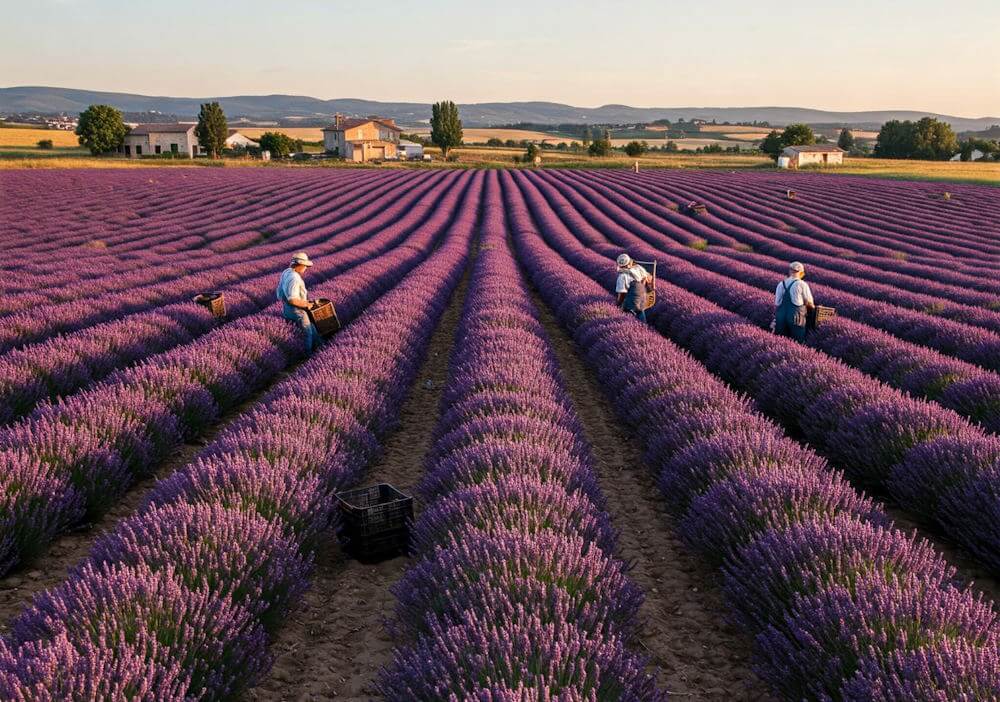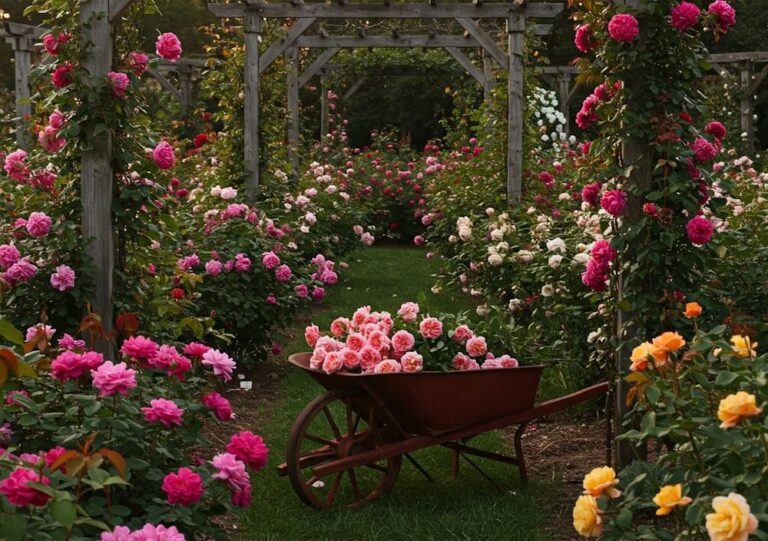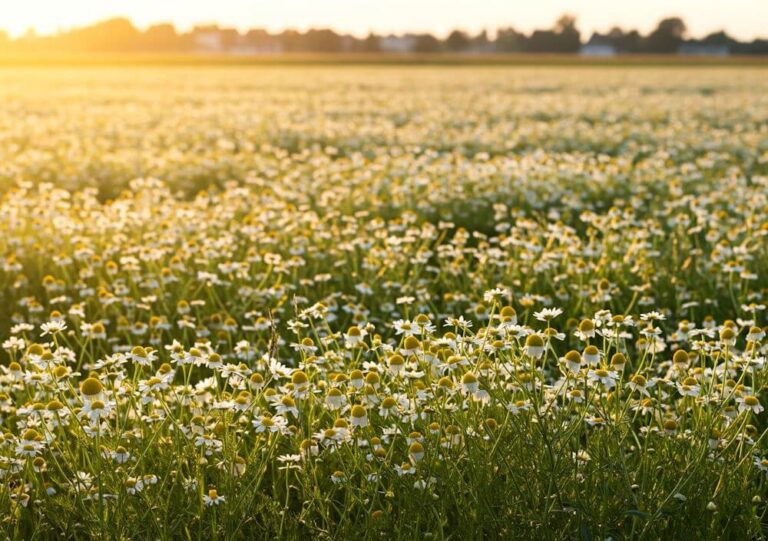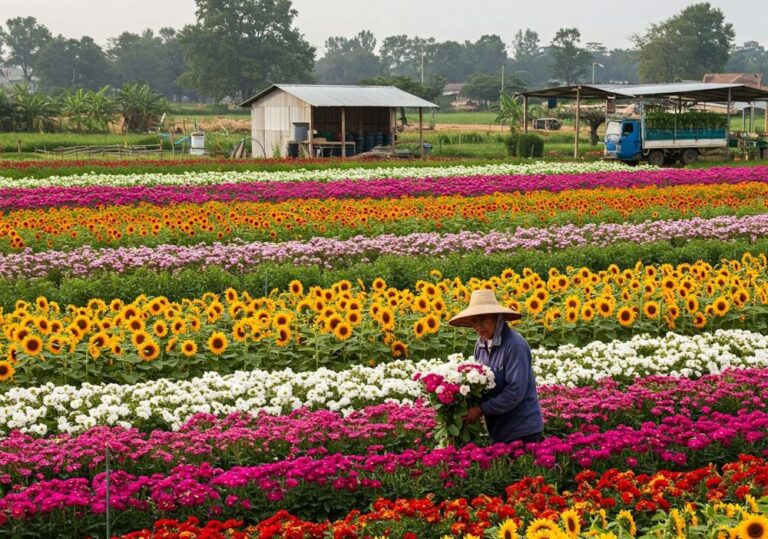Introduction to Lavender Farming
Lavender, a herbaceous perennial belonging to the Lamiaceae family, has captivated humans for centuries with its stunning beauty and aromatic properties. Historically, lavender has been cherished not only for its pleasing fragrance but also for its medicinal uses that date back to ancient civilizations. The Romans, Egyptians, and Greeks employed lavender in various ways, from bathing rituals to preserving mummies, emphasizing its importance across cultures. Today, lavender continues to thrive in various applications, mainly within the realms of aromatherapy, cosmetics, perfumes, and culinary arts.
The growing popularity of lavender is reflected in an increased demand for lavender-based products. In the realm of aromatherapy, lavender essential oil is acclaimed for its calming effects, often utilized to alleviate anxiety and promote restful sleep. Similarly, the cosmetic industry has embraced lavender, incorporating it into skincare products due to its natural antiseptic and anti-inflammatory properties. Culinary enthusiasts have also integrated lavender into their recipes, crafting unique dishes and infusions that highlight its distinct flavor profile.
As sustainable farming practices gain traction, lavender emerges as an appealing crop for aspiring farmers. Its resilience and adaptability to various climates make it suitable for diverse agricultural landscapes, particularly in regions with well-drained soil and ample sunlight. The herb is relatively low-maintenance, requiring minimal intervention once established, making it an ideal choice for both new and experienced farmers. Furthermore, the market potential for lavender is noteworthy, with opportunities to sell not only the plants but also value-added products like essential oils, sachets, and dried flowers.
Investing in lavender farming can yield significant returns, driven by its multifaceted uses and growing consumer interest in natural, sustainable products. By cultivating lavender, farmers can contribute to environmentally friendly practices while tapping into a lucrative market, ensuring that lavender remains a viable and profitable crop for years to come.
Choosing the Right Lavender Variety
Selecting the appropriate lavender variety is a pivotal step for successful cultivation and subsequent profit generation in the lavender market. The most popular varieties include English lavender (Lavandula angustifolia), French lavender (Lavandula dentata), and Spanish lavender (Lavandula stoechas), each possessing unique characteristics and marketable attributes.
English lavender is widely regarded for its high-quality oil and stunning floral displays. It thrives in cooler climates and is characterized by its hardy nature, making it a preferred choice for many growers. English lavender typically blooms in early summer, producing long-lasting, aromatic spikes that are highly sought after for both culinary and therapeutic uses. The floral quality of this variety ensures that it finds a robust market demand among buyers looking for both fresh and dried lavender products.
In contrast, French lavender offers a more vigorous growth habit and a more extended bloom period. It is well-suited to warmer climates where it can flourish with minimal care. French lavender typically features broader leaves and forms a bushier appearance, which can be visually appealing. While its essential oil yield may be lower than that of English lavender, its unique fragrance and extended flowering season attract a distinct set of consumers, particularly in aromatic and floral arrangements.
Lastly, Spanish lavender is notable for its distinctive flower heads, often resembling a pineapple shape, complete with charming bracts. This variety is particularly adapted to dry, Mediterranean climates and thrives in sandy soils. Spanish lavender produces a unique aroma, appealing to niche markets looking for varied sensory experiences in lavender products.
When choosing the right lavender variety, consider regional climate conditions, intended uses, and market preferences. By aligning these factors with the characteristics of each lavender type, growers can maximize their cultivation success and market profitability.
Preparing Soil and Planting Lavender
Growing lavender successfully begins with understanding its ideal soil conditions. Lavender thrives in well-draining soil with a pH level between 6.0 and 8.0. Therefore, it is essential to test the soil before planting to ensure these requirements are met. Soil testing kits are readily available and provide vital information regarding pH and nutrient levels, enabling you to amend the soil accordingly. If the pH is too low, adding lime can help elevate it, while sulfur can be used to lower it if necessary.
Once the soil conditions are suitable, the next step is to enhance drainage. Lavender roots are susceptible to rot in heavy, waterlogged soils. Consider mixing in sand or gravel to improve soil texture and ensure adequate drainage. Tilling the soil to a depth of at least 12 inches not only aerates it but also allows for the incorporation of organic matter, which will contribute to a nutrient-rich growing environment.
After preparing the soil, it’s time to focus on planting techniques. The best time to plant lavender is in the spring, after the last frost, or in the fall, providing ample time for root establishment before winter. When planting, space the lavender plants about 2 to 3 feet apart to allow for proper air circulation and prevent mildew. Dig holes that are slightly larger than the root ball of the plant, and gently loosen any compacted roots before placing the lavender in the hole. Cover the roots with soil and water thoroughly, ensuring that the soil around the roots is firm yet loosely packed to avoid water retention.
By following these steps for soil preparation and planting, you will create a robust foundation for healthy lavender plants that can thrive and yield high-quality flowers for market profit.
Lavender Care: Watering, Pruning, and Pest Management
Proper care is essential for the successful growth of lavender, a plant known for its drought-resistant characteristics and preference for well-drained soil. Watering is a critical factor that influences the health of lavender plants. Regular, deep watering during the plant’s establishment phase is beneficial; however, once the plants are rooted, the need for supplemental watering diminishes significantly. Lavender thrives in arid conditions, and over-watering can lead to root rot and other complications. Applying a drip irrigation system can help ensure that moisture reaches the roots without waterlogging the soil. It is advisable to allow the top inch of soil to dry out between watering sessions, which encourages strong root development.
Another vital aspect of lavender care is pruning, which can significantly enhance the yield and overall health of the plants. Late winter or early spring is the ideal time for pruning established lavender plants. This process involves cutting back approximately one-third of the plant’s height. Pruning not only promotes bushier growth but also helps in controlling the spread of the plant while preventing woody growth, which can be less productive. It is crucial to use sharp, clean tools to make clean cuts, minimizing the risk of disease.
Pest management is also an integral component of lavender care. Common pests that affect lavender include aphids and the spittlebug, while diseases such as root rot and fungal infections can pose significant threats. Regular inspection of the plants can help identify signs of infestations or diseases early on. Implementing organic pest control methods, such as introducing beneficial insects like ladybugs, can help manage pests effectively. Additionally, ensuring proper air circulation and avoiding overcrowding can mitigate the risk of diseases, maintaining the vitality of your lavender harvest. Understanding these aspects of lavender care enables growers to achieve a fruitful and sustainable yield.
Harvesting Lavender: Timing and Techniques
Harvesting lavender requires an informed approach to ensure the collection of high-quality blooms. Timing is crucial as it significantly influences the oil content and overall quality of the lavender. The optimal period for harvesting typically falls when the flowers have just begun to open, capturing the peak concentration of essential oils. This timing can vary slightly depending on the specific lavender variety, but generally, late morning is the best time for harvesting due to lower moisture levels in the plant.
Tools essential for harvesting include sharp shears or garden scissors. These tools allow for a clean cut, which reduces the risk of damaging the plant and promotes healthy regrowth. When cutting lavender, the recommended technique is to slice the stem just above the leaves, ensuring that a portion of the stem remains intact. This practice is crucial for maintaining plant health and enhancing future yields.
In addition to cutting techniques, handling lavender properly after harvesting is vital for preserving its quality. It is advisable to gather the lavender in small bunches, which aids in preventing damage to the fragile flowers. If lavender is being harvested for essential oils, care should be taken to avoid bruising the plants, as this can degrade the quality of the oil. Gathered bundles should then be placed in a shaded and dry area to prevent wilting and to facilitate the drying process efficiently.
Moreover, different markets require specific harvesting strategies. For bundle sales, it’s important to consider the aesthetic appeal of the flowers; thus, cutting should be done to create uniformity in size and shape. Conversely, for essential oils, a focus on the earliest blooming stages of the flowers is emphasized to optimize oil extraction. Understanding the differing requirements of these markets can significantly enhance profitability.
Processing and Drying Lavender for Market Sales
Once lavender has been harvested, the post-harvest processing is crucial to ensure that the quality of the flowers is preserved for market sales. Proper drying techniques play a significant role in maintaining the aroma and vibrant color that are highly sought after by consumers. There are several methods recommended for drying lavender, each with its own advantages.
Air drying is one of the most traditional and effective methods. To air dry, gather lavender stems into small bundles and hang them upside down in a cool, dark, and well-ventilated area. This process can take anywhere from a few days to two weeks, depending on the humidity and temperature. It is essential to protect the lavender from direct sunlight, as UV rays can diminish its color and fragrance. This method not only preserves the beauty and scent of the flowers but also allows for a natural evaporation process that enhances the overall quality.
An alternative method is using dehydrators, which provide controlled temperature and airflow, significantly speeding up the drying process. When utilizing a dehydrator, it is important to set it to a low temperature to prevent the essential oils from evaporating, which can compromise the lavender’s aromatic properties. Typically, this process may take a matter of hours rather than days, making it efficient for larger quantities.
Regardless of the drying method chosen, the storage of dried lavender is equally important. Once dried, the lavender should be stored in airtight containers away from light and moisture to maintain its quality for as long as possible. Glass jars, vacuum-sealed bags, or mylar bags are all excellent choices. Ensuring proper storage conditions will help maximize the shelf life of the lavender, ensuring it remains fragrant and colorful until it reaches the market.
Marketing Your Lavender Products
Marketing lavender products effectively involves a strategic combination of branding, packaging, and understanding the target audience. A strong brand identity is crucial as it differentiates your products in a competitive market. Consider developing a brand name, logo, and a consistent color scheme that conveys the essence of lavender, such as relaxation and natural beauty. This branding should extend to all marketing materials, ensuring coherency and recognition.
Packaging plays a significant role in attracting customers. It is important to choose eco-friendly materials that align with the natural characteristics of lavender. Attractive and functional packaging can enhance product appeal and communicate quality. Ensure that all packaging complies with labeling regulations, which may include ingredients, usage instructions, and origin information. Clear, informative labels also build customer trust and promote transparency.
Identifying the right platforms for selling lavender products can amplify your market reach significantly. Local farmers’ markets present an excellent opportunity for direct sales, allowing you to engage with customers face-to-face. Establishing an online store will provide another sales avenue, as e-commerce continues to grow in popularity. On platforms such as Etsy or Amazon, handmade lavender-based products can gain visibility among a broad audience. Furthermore, consider wholesale opportunities by partnering with local boutiques or health stores, which can help distribute your products to a wider client base.
Understanding your target demographic is essential for effective marketing. Tailor your promotional tactics to appeal to specific groups, such as health-conscious individuals, beauty aficionados, or home decorators. Utilize social media platforms, such as Instagram and Facebook, to showcase visually engaging content that resonates with your audience. Collaborations with influencers in the wellness or home décor space can further enhance visibility and attract potential buyers. By leveraging these strategies, farmers can successfully market their lavender products and increase profitability.
Understanding the Financial Aspects of Lavender Farming
Venturing into lavender farming presents an opportunity for profitability; however, a thorough understanding of the financial dynamics is essential for sustainability and growth. Initial investments form the cornerstone of any agricultural enterprise, and lavender is no exception. Key expenditures typically include land acquisition, soil preparation, lavender plant purchase, and infrastructure development such as irrigation systems and storage facilities. Depending on the scale of the operation, these initial outlays can range significantly, but conducting a detailed assessment and budget can help mitigate financial risks.
Operational costs are another crucial element to consider. These comprise expenses related to labor, maintenance of the farm, irrigation, fertilization, and pest control. Lavender is relatively low-maintenance once established, yet ongoing care is essential to ensure high yield and quality. Additionally, marketing strategies should not be neglected; allocating resources for branding, advertisement, and distribution channels can significantly impact revenue generation. Understanding labor costs is also necessary, particularly if hiring seasonal workers to assist during peak harvesting times.
When it comes to potential profits, the various avenues for income are one of the most appealing aspects of lavender farming. Fresh lavender flowers can be sold directly to consumers or to florists, while dried lavender products often yield higher profit margins as they can be used in essential oils, sachets, and culinary items. The extraction of lavender essential oil further expands profitability options, allowing farmers to tap into the growing natural products market. Overall, by diversifying income streams and providing high-quality products, lavender farming can be transformed into a rewarding and profitable venture.
Conclusion and Future Trends in Lavender Farming
Growing lavender for market profit offers numerous benefits, making it an attractive venture for aspiring farmers. Lavender cultivation not only provides a viable source of income but also contributes positively to mental health and environmental sustainability. The aromatic qualities and versatility of lavender allow farmers to tap into various markets, offering products such as essential oils, dried flowers, and culinary herbs. Such diversity enhances profitability and increases the potential customer base.
Looking ahead, several emerging trends in lavender farming deserve attention. One significant trend is the growing demand for organic lavender products. As consumers become increasingly aware of the harmful effects of synthetic chemicals and fertilizers, they lean toward organically cultivated selections. By adopting organic farming practices, lavender growers can meet this changing consumer preference, potentially commanding higher prices for their products.
Additionally, the notion of value-added products is gaining momentum within the lavender industry. Instead of merely selling raw lavender, farmers can explore creating products like lavender-infused soaps, candles, or culinary items. This diversification not only enhances profit margins but also helps in capturing niche markets that value artisanal and locally sourced products. Such expansions can lead to more resilient businesses as they adapt to shifting consumer preferences.
Moreover, the increasing interest in wellness and aromatherapy has opened new avenues for lavender farmers. As people seek natural remedies for relaxation and stress relief, lavender’s established reputation in this domain may drive up demand. By positioning themselves at the intersection of traditional cultivation practices and modern wellness trends, farmers can maximize their market potential.
In conclusion, the lavender farming industry is entering a promising phase, driven by organic growth, value-added opportunities, and a strong consumer focus on well-being. Aspiring farmers who embrace these trends will not only contribute to a burgeoning market but also enjoy the creative and financial fulfillment that comes from cultivating this beloved herb.





